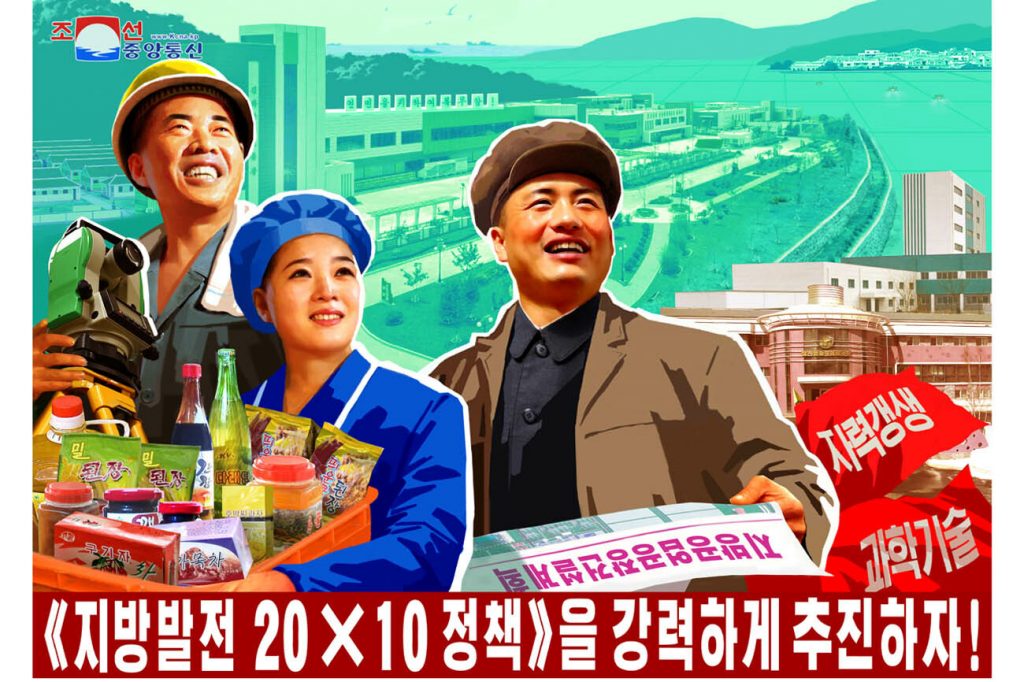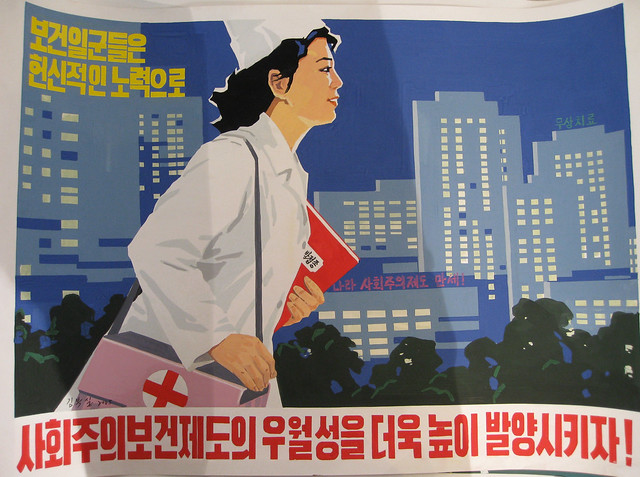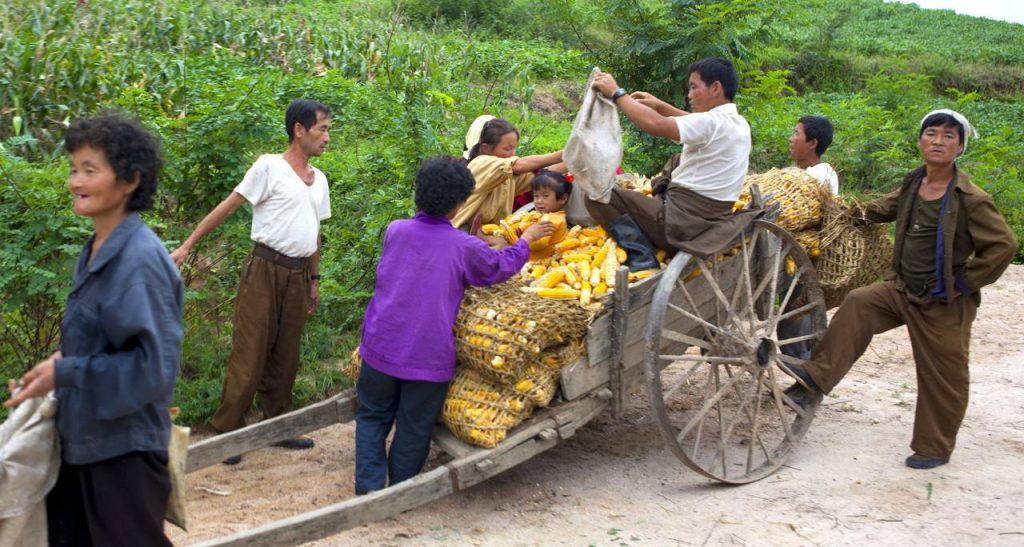North Korea’s 20×10 Policy, introduced in 2024, marks one of the most ambitious and comprehensive domestic development strategies undertaken by the Democratic People’s Republic of Korea (DPRK) in recent decades. The essence of the policy is clear and direct: the government aims to transform 20 counties annually over the next 10 years.
These counties are slated to undergo sweeping modernization efforts encompassing housing, industry, healthcare, education, cultural infrastructure, and public amenities. This initiative reflects a strategic pivot towards improving rural livelihoods and promoting balanced regional development across the country.
Background and Strategic Intent
Historically, North Korea has launched numerous development campaigns, often characterized by sporadic progress and uneven outcomes. Unlike many of these previous initiatives, the 20×10 Policy appears to be distinctive in its scale, organization, and implementation. Central authorities have committed significant resources and political capital to ensure that tangible change is visible within the designated counties.
The policy aligns with the country’s broader self-reliance philosophy, known locally as Juche, and is intended to reduce urban migration by revitalizing rural communities and regional hubs.

Image: KCNA
The Pilot Phase: Songchon and Yonthan Counties
Two counties have emerged as emblematic of the policy’s early success: Songchon in South Pyongan Province and Yonthan County in South Hwanghae Province. Songchon, in particular, has drawn intense focus from the highest levels of government. Kim Jong Un visited Songchon seven times throughout 2024, underscoring the county’s importance as a model for nationwide replication.
The transformation in Songchon includes the rapid completion of three factories producing essential goods such as soap, processed foods, and textiles. These factories are not merely symbolic; they contribute significantly to local employment and the county’s economic base. Moreover, residential construction has accelerated, with new housing developments designed to improve living standards. Civic infrastructure, including schools and cultural centers, have also been prioritized to foster community cohesion.
Yonthan County mirrors this approach, focusing on rapid industrialization coupled with social infrastructure improvements. The county’s strategic location has made it a test case for optimizing logistics and supply chains, demonstrating how regional centers can effectively support surrounding rural areas.
Kimhwa and Jaeryong: Emerging Success Stories
Beyond the initial pilot phase, other counties such as Kimhwa in Kangwon Province and Jaeryong in South Hwanghae Province have shown promising developments. Kimhwa had previously benefited from limited improvements, serving as an early proof-of-concept for scaling development projects [. Jaeryong has drawn official attention in early 2025, when Kim Jong Un praised its new factories and cultural facilities as prime examples of local commitment and central planning synergy.
These counties also illustrate the policy’s holistic approach, as new apartment complexes, healthcare clinics, cultural halls, and recreational parks have been established. Such investments are not solely focused on economic output but aim to reverse decades-long rural depopulation trends by making rural life more attractive and sustainable.

Coastal Innovation: Sinpho and Aquaculture Development
The 20×10 Policy is not a monolithic program; rather, it is tailored to local geography and resource endowments. Sinpho, a coastal city on the east coast, exemplifies this adaptive approach. The completion of a major fish processing plant by the end of 2024 represents a strategic pivot towards enhancing the maritime economy. Kim Jong Un’s visit, documented by Reuters, highlighted the facility’s role in improving nutritional self-sufficiency and diversifying local industry.
Coastal counties like Sinpho focus on maritime infrastructure, including fish farms and processing centers, whereas mountainous regions prioritize light industry, agriculture, and forestry. This localized approach enhances the policy’s effectiveness by leveraging unique regional strengths while maintaining overarching national goals.
The Broader Map: Additional Counties Undergoing Transformation
Several other counties are undergoing development under the 20×10 Policy, all contributing to a “balanced national push.” These include:
- Kangdong County near Pyongyang, where new health centers and pharmacies are being constructed.
- Orang County in North Hamgyong Province, focusing on industrial and agricultural modernization.
- Ryonggang County, emphasizing agricultural reform and mechanization.
- Gyongsong County, combining industrial growth with cultural projects.
Satellite imagery and open-source intelligence from organizations such as 38 North have confirmed ongoing construction and infrastructural upgrades in these areas, underscoring the policy’s nationwide scope.
Healthcare, Education, and Cultural Investments
One of the most remarkable features of the 20×10 Policy is its expansive scope beyond economic infrastructure. The initiative explicitly incorporates the development of healthcare facilities, including regional hospitals, dental clinics, and pharmacies. These improvements are particularly evident in counties adjacent to Pyongyang and along the eastern seaboard, where access to medical services has historically been limited.
Equally important are the investments in cultural infrastructure such as sports halls, theaters, and educational centers. These projects aim to enhance the quality of life and provide social spaces that nurture community identity. This comprehensive approach aligns with North Korea’s goal of creating stable, self-sufficient rural communities where citizens can find both material and cultural fulfillment.

Photo by BBC World Service
Central Coordination and Local Execution
The 20×10 Policy is centrally coordinated yet locally implemented, reflecting North Korea’s unique governance model. Construction brigades and local labor forces play key roles in executing projects, but technological advances and improved building methods distinguish this campaign from prior efforts.
Kim Jong Un’s hands-on involvement—marked by numerous site visits and detailed directives—has galvanized the policy’s momentum. According to NK Leadership Watch, his direct feedback and oversight have contributed to efficient planning and resource allocation, ensuring that counties meet their targets promptly.
Challenges and Sustainability
While the policy has shown remarkable early progress, experts caution about long-term sustainability. Concerns exist regarding potential overemphasis on industrial expansion at the expense of agricultural land, which remains vital for food security. Additionally, the availability of skilled labor to operate new factories and facilities over time remains uncertain.
Nevertheless, North Korea’s centralized governance structure provides a strategic advantage in managing workforce distribution, housing, and transport infrastructure. This centralization facilitates a unified approach to resource mobilization that might be more difficult to achieve in decentralized systems.
Implications for North Korea’s Rural Landscape
The 20×10 Policy is more than an economic development plan; it represents a new vision for rural North Korea. By focusing on balanced regional growth, the DPRK government aims to stem urban migration, reduce regional disparities, and bolster national resilience.
For outside observers, including researchers, journalists, and the growing number of intrepid travelers who venture into North Korea, these transformed counties offer a rare glimpse into the country’s evolving socio-economic landscape. What were once overlooked or underdeveloped areas are becoming showcases of North Korea’s modernisation strategy, reflecting a narrative of progress aligned with the country’s self-reliant ideals.

Eric Lafforgue
Conclusion: A Policy Worth Watching
North Korea’s 20×10 Policy is ambitious in scale and comprehensive in vision. While many questions remain about its long-term viability, the policy has already produced visible and meaningful changes in multiple counties. By addressing housing, industry, healthcare, education, and cultural life in an integrated manner, the DPRK is making a concerted effort to revitalize rural areas.
As this policy unfolds over the next decade, it will be critical for analysts and observers to monitor its progress and challenges. Whether the 20×10 Policy becomes a turning point in North Korea’s development history or another chapter in its ongoing story, it undeniably reflects a genuine effort to reimagine rural life and economic balance within the country.
